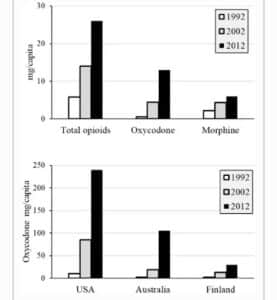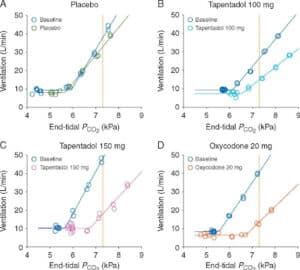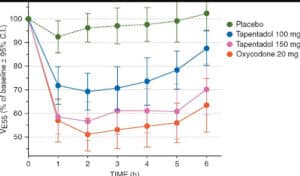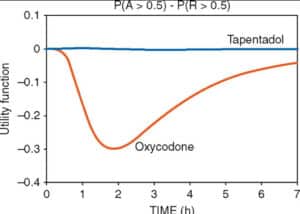
Ivermectin A Promising Treatment for Various Infections
Ivermectin, a popular drug for treating parasites in animals, has recently been identified as a promising treatment for numerous infectious diseases in humans. In recent
Introduction
Analgesics since their inception in the sixteenth century have played an important role in providing symptomatic relief to the patient. Along with working on pain reduction, researchers have observed their work on providing anxiolytic and sedative effects on the patient. But with the relief is associated the risk of getting used to or misusing the medication resulting in severe complications. The risk is more so in the case of opioids owing to their effect on the reward centers of the brain.

The problem is especially evident in Mu-opioid receptors that along with targetting analgesic effects are responsible for the induction of tolerance and other adverse reactions like addiction and dependence. Other relatively harmless opioid receptors ( DOP, KOR, NOP) are not as effective as MOPs in analgesic effectivity; making it a tricky area to enter regarding pain relief without long-term effects on patient’s health with safety.
With the advent of 2nd generation analgesics like Tapentadol, the pain relief mechanism has been further modified to suit analgesic needs of all types; making it important to understand whether the risk associated with the medication is greater or lesser than its analgesic strength and efficiency.
Let’s understand in brief about Tapentadole and Oxycodone before proceeding with their safety parameters.
Introduced in 1980 by a German pharmaceutical company, Tapentadol belongs to the benzenoid group of medications with a dual mode of action as its prominent characteristic. Tapentadol is unlike other opioids, not a pro-drug making it a useful option for patients not responding to opioids with the pro-drug features as prima-basic. It is regarded as a moderately strong opioid with potency in between that of Tramadol and Morphine ( opoids) and efficacy similar to Oxycodone analgesic.

Oxycodone, another German-based semi-synthetic opiate is derived from ‘thebaine’ a plant-based alkaloid. A first-generation analgesic. Oxycodone has been in use since 1918 and declared an essential medication by WHO. Its potency has been postulated by researchers to be 1.8 times more than Morphine for total effect and 2.2 times for peak effect.
The improved efficiency with the introduction of its controlled release form has resulted in a substantial increase in its use in recent years, especially in developed countries.
– Tapentadol vs Oxycodone for comparison of Respiratory effects
Respiratory depression is a serious side effect associated with the injudicious use of opioids. To combat this issue, researchers are on the lookout for a safer option, especially with regard to respiratory side effects.
Tapentadol and Oxycodone both are considered moderate analgesics with 100mg Tapentadol and 20mg Oxycodone showing equal efficiency traits. In order to understand their role in respiratory depression, a single 4 center crossover study was found using healthy subjects. Those with positive alcohol breath tests, positive pregnancy tests, or affirmed addicts were barred from the tests.
The subjects either received Tapentadol 100mg, Tapentadol 150 mg, Oxycodone 20 mg, or a placebo. Each participant randomly received all 4 treatments on four separate occasions at least a week apart. Subjects breathed through a facemask attached to a pressure transducer system and to three mass flow controllers for delivery of oxygen, carbon dioxide, and nitrogen. The inspired and expired oxygen and carbon dioxide were measured at the mouth using a capnograph. Heart rate and oxygen saturation were measured continuously throughout the study day.

Respiratory measurements without inspired CO2 and hypercapnic ventilatory response were obtained at strategic time periods. Subjects were queried regarding the presence of symptoms like dizziness, dysphoria, or euphoria in a questionnaire. Both Tapentadole and Oxycodone showed significant and long-lasting respiratory depression following oral intake. Tapentadol 150 mg dose showed a 1.5 times larger intensity of respiratory depression than Tapentadol 100mg. Oxycodone had a significantly larger respiratory depressant effect than Tapentadol 100 mg but the same magnitude of depressant effect in Tapentadole 150mg.

The study proved that Tapentadole produces less respiratory depression than Oxycodone at specific doses.

Study regarding Tapentadol safety profile
Traditional opioids like Oxycodone exert their analgesic effects through Mu-opioid receptors; contributing to 100% of the associated side effects. Tapentadol in comparison works through the dual action of mu-opioid receptors with a noradrenaline reuptake inhibitor effect resulting in fewer side effects.
In a study conducted to evaluate the validity of the above postulates, pooled analysis from three trials was collected. The comparison was conducted between Tapentadol prolonged release with Oxycodone prolonged-release tablets. Patients aged ≥75 years with moderate to the severe arthritic knee or low back pain were a part of the project.
The study project revealed that the incidence of gastrointestinal treatment-emergent adverse effects, of nausea or vomiting, were significantly lower in the Tapentadole PR group.
Apart from gastrointestinal issues, a comparison of bowel function was examined between Tapentadol immediate release, Oxycodone, and placebo effects. Bowel function was better in patients using Tapentadol with lower use of laxatives recorded as well.
To confirm the reports, three randomized, multicentre, double-blind trials on Tapentadole ER tablets were conducted. Patients diagnosed with moderate to severe chronic osteoarthritis or lower back pain were selected. The primary endpoint was a ≥ 30% pain relief without nausea, vomiting, constipation, or discontinuation because of these effects.
After 12 weeks of treatment, patients administered Tapentadol PR achieved≥30% pain relief in comparison to Oxycodone recipients along with the recorded achievement of quality of life. The results of the trials suggested that Tapentadole ER was associated with significantly better composite outcomes than Oxycodone CR.
Other advantages of Tapentadol
Tapentadol PR and Oxycodone were compared for postoperative pain treatment in orthopedic trauma surgery in randomized, observer-blinded, active-controlled clinical trials. Constipation rates were observed to be similar for both medications in this particular trial. That said vomiting rates were significantly lower in Tapentadole than in Oxycodone ( 3% Tapentadol comparison to 8% Oxycodone).
In another Australian report for adverse effects evaluation of either medication, public case reports were extracted by the Therapeutic Goods Association for Tapentadol and Oxycodone cases. 104 reports were in total found for Tapentadol as opposed to almost 249 reports for Oxycodone cases. With studies proving improved cardiovascular profile with limited risk of abuse prove that Tapentadol use has significantly fewer Side-effects than Oxycodone. It can be safely used in patients with moderate to severe pain without the risk of serious side effects.
Conclusion
Despite their effectiveness, the growing incidence of misuse associated with prescription painkillers is a problem that cannot be ignored. It is estimated that 18 women die every day of a prescription painkiller overdose in the US with around 6600 deaths recorded since 2010. Earlier prevalent in men, now it is being observed in both sexes to add to the complications.


Ivermectin, a popular drug for treating parasites in animals, has recently been identified as a promising treatment for numerous infectious diseases in humans. In recent

Mental health issues affect one in every seven people around the world, but unfortunately don’t get the required intervention or counseling as physically acquired disorders.